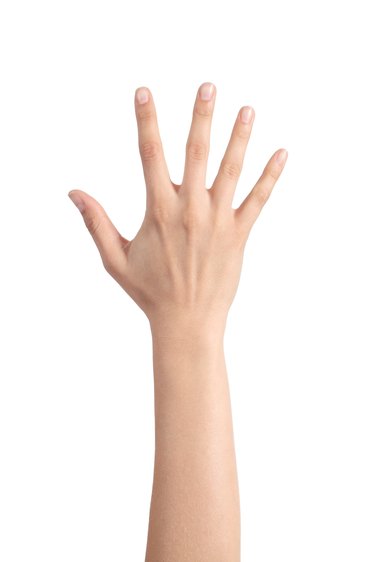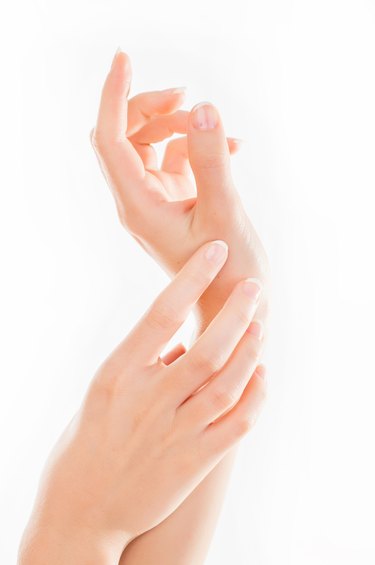
Golfer's elbow, tennis elbow and baseball elbow all refer to elbow tendonitis, which is the inflammation, swelling and irritation of the tendons in the elbow area, and can occur after participating in these particular sports. Elbow tendonitis is an overuse injury. The cause is repeated contraction of the forearm muscles that you use to straighten and raise your hand and wrist, according to MayoClinic.com. If the pain is on the outside of the elbow, it is referred to as lateral epicondylitis, and if it is on the inside, it is called medial epicondylitis. The treatment and stretches for both are essentially similar.
Warm Up
Video of the Day

The Hand Health Resources website recommends doing cardio exercise for 15 to 20 minutes a day to help get the blood flowing. The cardio will help warm up all muscles of the body and is particularly helpful to the forearm and elbow, as tendons do not have very good blood supply. The cardio before stretching may help the stretching to be less painful, and will help pump out waste products faster and bring in more oxygen and nutrients to the area.
Video of the Day
Hand and Finger Stretches

Opening the hands and fingers will relieve stress in the hands and help get the tendons moving. The first recommended stretch is for the whole hand. Open the hand and spread the fingers and thumb as far apart from each other as possible, and hold. This stretch should feel good as the hand does not open up much during the day. The other stretch involves putting the thumb into a thumbs up or hitch hiker position and really pulling the thumb towards the forearm. Extra pressure can be exerted with a finger from the opposite hand, but make sure to push the thumb near the base and not the tip to prevent any injury to the thumb itself. The Hand Health Resource website recommends doing these stretches for 20 seconds of every working hour.
Lateral Epicondylitis Stretch

This stretch will help to work out and relax the muscles on the outside of the forearm and elbow. The Nicholas Institute of Sports Medicine and Athletic Trauma (NISMAT) recommends holding the stretch for 20 to 30 seconds with a rep of five to 10 times, twice a day. The stretches are to be done in a pain free range and never pushed to the point where symptoms are reproduced. This stretch involves having the hand open or closed and stretching the palm down towards the forearm. The stretch can be deepened with overpressure from the opposite hand.
Medial Epicondylitis Stretch

To help the muscles on the inside of the elbow, the back of the hand should be pulled or stretched towards the top of the arm. A gentle pull or stretch should be felt on the inside of the forearm. Overpressure can be added with the opposite hand. NISMAT states that these stretches should be held for 20 to 30 seconds and repeated five to 10 times, twice a day. It is also important to do these stretches before and after engaging in the irritating activity.
Is this an emergency? If you are experiencing serious medical symptoms, please see the National Library of Medicine’s list of signs you need emergency medical attention or call 911.